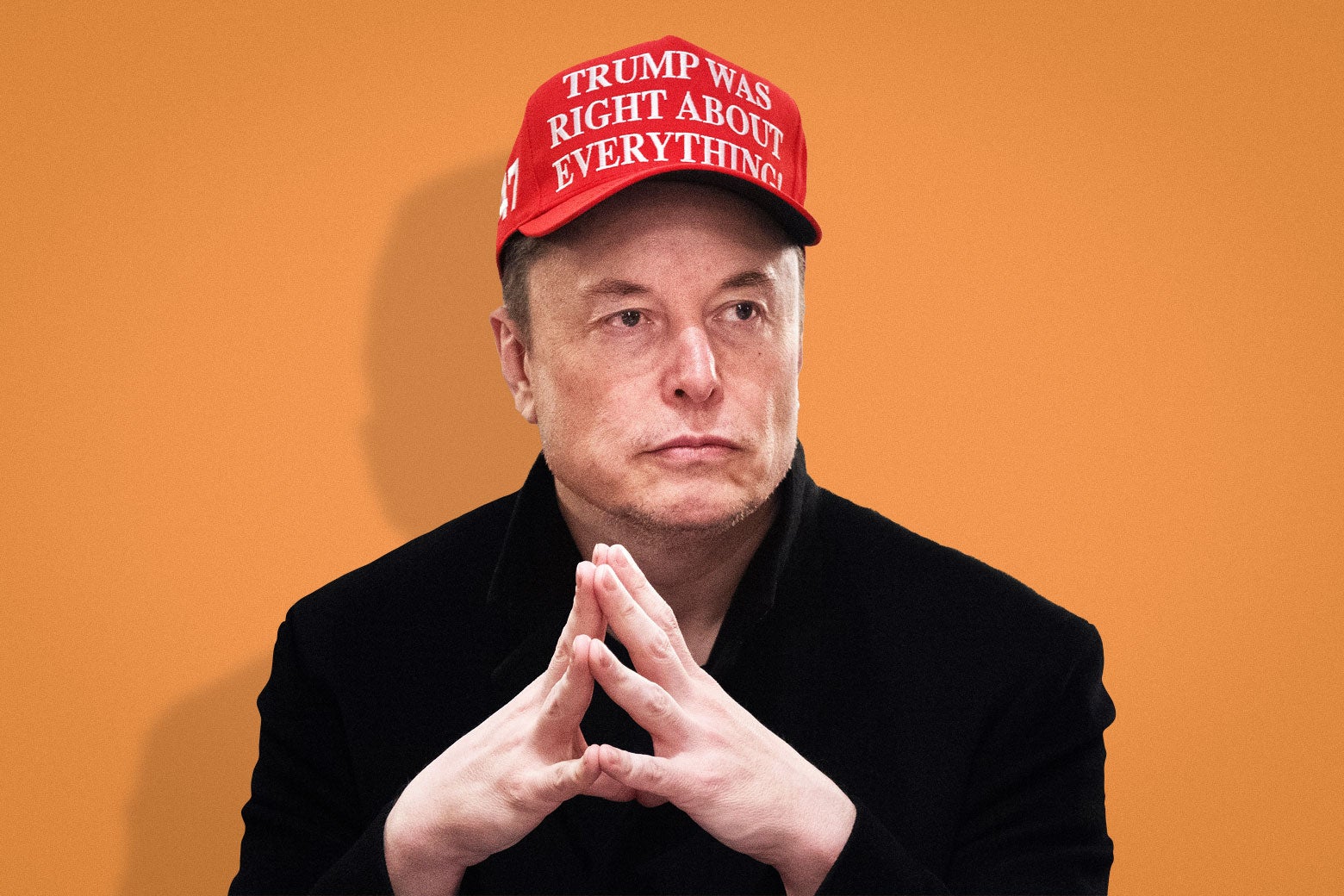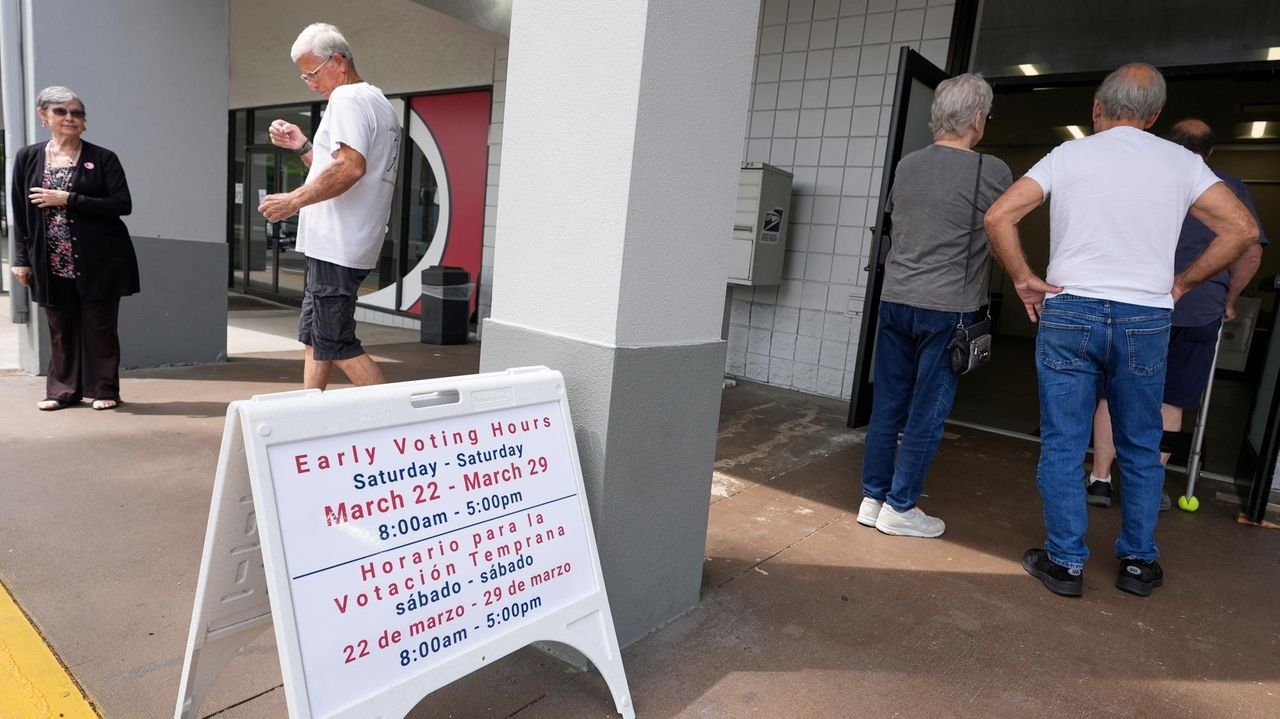Sign up for the Slatest to get the most insightful analysis, criticism, and advice out there, delivered to your inbox daily.
Although it has been more than a decade since judicial and administrative rulings freed the ultrawealthy to contribute unlimited sums to outside political groups, 2024 marked a sea change in the financing of federal elections—and those changes are already spreading to state and local elections, including the upcoming high-stakes Wisconsin Supreme Court race. It’s not just gimmicks like Elon Musk’s offer of $100 to registered Wisconsin voters who sign a petition against “activist judges,” and $100 more for each additional voter they persuade to do the same. Musk and other megadonors have blown past previous spending records in a way that threatens a new American oligarchy.
In the 2024 elections, the top six donors supporting or opposing federal candidates each reported contributing at least $100 million, according to data compiled by OpenSecrets. Those donors—Musk ($291.5 million), Timothy Mellon ($197 million), Miriam Adelson ($148.3 million), Richard and Elizabeth Uihlein ($143.5 million), Ken Griffin ($108.4 million), and Jeffrey and Janine Yass ($101.1 million)—all exclusively supported Donald Trump and other Republican candidates (with the exception of the Yasses, who gave a nominal $1,500 contribution on the Democratic side). The biggest donor on the liberal side was former New York City mayor and publisher Michael Bloomberg, who gave $64.3 million total, with all but $1 million going to the Democratic side.
We have never seen so many nine-figure donors in an election, and with such lopsided giving. In the 2022 midterm elections, the sole nine-figure donor was George Soros ($178.8 million), with his contributions going to Democrats. In earlier election seasons, donations of this size were also rare: There were two in 2020 (Sheldon and Miriam Adelson and Michael Bloomberg) one in 2018 (Sheldon Adelson), and none before that.
These numbers do not take into account all the spending and contributions by these ultrawealthy individuals (or the amounts given to non-disclosing political organizations). Take the expenditures of the world’s richest man, Musk. Even the $291.5 million figure does not include the value of content on his social media platform X (formerly Twitter), which reaches hundreds of millions of users. Researchers found that Musk seems to have tweaked the platform’s algorithm to promote content favorable to Trump, something quite valuable but hard to precisely value. Nor do these figures include the value of the publicity for his controversial get-out-the-vote efforts in swing states, among them a $1 million a day lottery for registered voters that could well have violated federal law.
The rise of the nine-figure donor raises two fundamental questions: Why is this happening now? And how will this new spending affect American elections and public policy?
In the 1976 case Buckley v. Valeo, the U.S. Supreme Court interpreted the First Amendment as allowing an individual to spend unlimited sums independently supporting or opposing candidates for office, ruling that limits meant to equalize the voices of those in society to influence elections were “wholly foreign to the First Amendment.” In that same opinion, the court upheld restrictions on the amount that an individual could contribute to political committees.
Right after Buckley, nothing would have stopped a billionaire from spending $100 million or more to independently support or oppose a candidate for office, so long as the money was not contributed to a candidate or a political committee or spent in coordination with them. Despite Buckley and other similar holdings, it was rare (and remains rare) for individuals to engage in significant independent expenditures.
The ultrawealthy likely did not want to engage in large independent expenditure operations that would expose their names on ads supporting or opposing candidates, as federal campaign disclosure law requires. And they also probably did not want to have to hire and oversee employees to spend money on their behalf: It would be far easier to give the funds to a candidate’s committee or another professional group supporting or opposing candidates. But contributions to outside groups—which could help put some distance between the donor’s name and the ads—were capped at $5,000, rendering unavailable this path for big money.
That $5,000 cap came under political pressure and constitutional attack. In the 2004 elections, Soros gave millions in contributions to America Coming Together, a 527 group (so called for a different provision of the Internal Revenue Code) supporting Democrat John Kerry for president over incumbent George W. Bush. ACT claimed that because of how it spent its money (by avoiding election ads explicitly calling for Kerry’s election or Bush’s defeat), the $5,000 cap didn’t apply. After 2004, the Federal Election Commission reined in the practice of using 527 groups to circumvent contribution limits to political committees.
But then came the Citizens United revolution. In 2010 the Supreme Court reversed two key precedents that had limited the independent spending of corporations in federal elections on the grounds that such spending could “distort” the political marketplace. The actual holding of Citizens United v. FEC was less important than the reasoning employed by the court; roughly speaking, the justices made a number of doctrinal moves facilitating campaign finance deregulation. Most importantly, SCOTUS significantly narrowed the definition of corruption from one that included the sale of access to political figures by large donors to one more akin to quid pro quo bribery.
Citizens United resulted in a series of additional Supreme Court and lower-court cases (most importantly, a D.C. Circuit case called SpeechNow) and Federal Election Commission rulings that led to further deregulation of the campaign finance system. Many of these cases engaged in a kind of bootstrapping in which the courts or regulators first made a hole in the law, and challengers could subsequently point to that hole as a justification to strike down more laws, reasoning that the remaining laws were no longer effective.
One of the most important examples of this deregulatory bootstrapping occurred in relation to political committees that engage only in spending money independently in campaigns. These entities, now known as super PACs, function just like ACT, the 527 group Soros supported in 2004. But now these groups are blessed as legal, and they can take unlimited sums to support candidates. On top of that, thanks to a ruling of the Federal Election Commission sought by Democrats in 2024, campaigns can now closely work with those super PACs on voter registration and get-out-the-vote drives without running afoul of the rules prohibiting coordination between candidates and nominally independent outside groups. According to the Washington Post, Musk spent millions last year working with the Trump campaign on these efforts.
Billionaires no longer need to worry that they will break the law by spending previously obscene funds supporting or opposing candidates for office. These days, anyone with sophistication can spend whatever they want in federal elections, so long as they structure the giving properly. And some of the ultrawealthy (like others in society) are passionate about politics during our polarized times. They increasingly see no reason to resist leveraging their economic clout in the political arena.
And it’s not just the nine-figure donors who are worrisome. OpenSecrets data show that the top 100 donors gave almost 70 percent of total money to outside groups like super PACs. The top 1 percent of donors gave 98 percent of the outside money. And thanks to changes in technology, such as the rise in social media, the ultrawealthy have new ways to transform their economic heft into political might without risking legal trouble.
Today we have a mostly deregulated campaign finance system, except when it comes to some activities of political parties—rules the Supreme Court will likely soon strike down too. What remains is campaign finance disclosure, but much current political activity is not covered by disclosure rules because laws have not been updated to deal with the movement of campaigns to the online space. And new First Amendment attacks on the constitutionality of disclosure could soon bear fruit at an increasingly deregulatory SCOTUS. So we can expect a day when we may not even know how many nine-figure donors are out there seeking to influence our elections and our elected officials.
One might pooh-pooh the rise of the nine-figure donor and say it doesn’t matter. In the 2024 presidential election campaign, according to OpenSecrets data, Kamala Harris and her allies raised nearly $2 billion compared with Trump and his allies’ $1.45 billion. Overall, money was not as big a factor in the outcome of the election as other aspects that influenced voter choice, given that each side had ample funding to get out their message and run their campaign.
This minimization of the problem ignores two key points. First, the presidential election is unique in that it always attracts large amounts of money with high stakes and high interest. Money, even from a megadonor, is unlikely to be determinative: Both sides will be amply financed. But this is not necessarily true of other races. When Musk, for example, seeks to spend significant sums to influence the outcome of a Wisconsin Supreme Court race, or when Nicole Shanahan (RFK Jr.’s running mate for president) threatens to fund super PACs supporting Republican candidates to challenge incumbent senators who do not support Trump’s Cabinet nominees for confirmation, money can be much more influential—especially in otherwise noncompetitive general elections in which the real fight is for the party primary.
More important is what the money buys. Even putting aside the possibility of quid pro quo deals, the money secures influence and access. Musk has gained unprecedented access to Trump and unparalleled influence over the new administration through his White House office and activities for the amorphous Department of Government Efficiency, which is cutting federal employees and programs and engaging in the deep mining of governmental data (in many cases on issues with which Musk, the world’s richest man, has a financial conflict of interest). Republican senators toed the line and voted for Trump’s Cabinet nominees potentially out of fear of a Shanahan- or Musk-funded GOP primary.
These are not the only examples. Right after coming into office, Trump gave TikTok a reprieve, something that benefited supportive megadonor Jeff Yass, who owns a stake in its parent company. Miriam Adelson cares about Israeli policy, and she has had plenty of meetings with the president to make the case for her preferred Middle Eastern foreign policy. Again, one doesn’t need a quid pro quo to see how access makes it more likely for policy to favor the interests of the superrich.
All of this portends the rise of an American oligarchy, in which the richest individuals have an outsize influence on politics and public policy, made possible only because of the Supreme Court’s First Amendment decisions, beginning with Buckley and continuing with Citizens United and others. Even if the wealthy aren’t buying electoral outcomes, they are buying higher probabilities of affecting electoral outcomes and governmental decisions that work in their favor. And with the ability to purchase social media platforms, A.I. systems, and other new means of communication, knowledge production, and information dissemination, the wealthy will enjoy effective, unprecedented pathways to influence public debate in disproportionate ways.
Plutocracy and oligarchy, rule by the wealthy and superwealthy, threaten democracy. As I have long argued, the court took wrong turns in Buckley and Citizens United in viewing societal attempts to achieve political equality (or at least minimize grotesque political inequality) as “wholly foreign to the First Amendment.” Instead, reasonable limitations on the ability of oligarchs and plutocrats to convert their vastly unequal economic power into political muscle, combined with ample protection for robust political debate through searching judicial review, can assure both greater equality and the promotion of First Amendment values, thereby enhancing American democracy.













